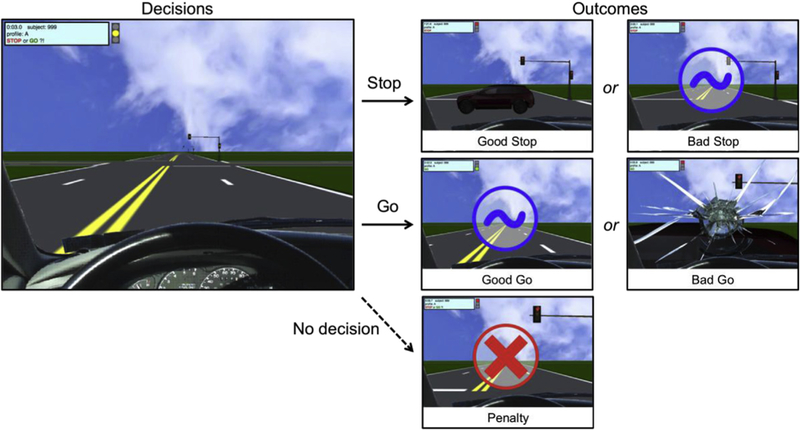Fig. 1.

The Yellow Light Game. Brain activation was modeled for decisions (i.e., at yellow-light onset) and outcomes. Both Stop and Go decisions result in either Good or Bad outcomes; if the participant fails to press a button (i.e., no decision), they receive a penalty. For Stop decisions, Good outcomes involve seeing a crossing car, indicating that the participant prevented a crash (and incurred a shorter delay); Bad outcomes involve seeing a safe intersection, indicating that the participant could have gone through the intersection safely (and prevented a delay). For Go decisions, Good outcomes involve seeing a safe intersection, indicating that the participant crossed without crashing (and prevented a delay); Bad outcomes involve crashing into a crossing car (and incurring a delay). Note that Bad outcomes for Stop decisions and Good outcomes for Go decisions are visually similar (i.e., blue circle).
